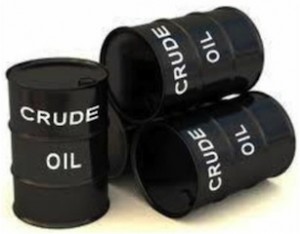China, India Keep Nigeria’s Crude Oil Export Alive

As the price of the nation’s major foreign exchange earner, crude oil, continues to struggle between $80 and $90 per barrel, four major Asian countries have been responsible for the sustenance of this feat, which is, however, still below comfort level.
The countries, China, India, Japan and South Korea, have been responsible for the consumption of about 42 percent of Nigeria’s crude oil export in the first eight months of this year.
According to Platts, a leading global provider of energy information, 42 percent or 819,000 barrels of Nigeria’s crude oil output was taken up by the said countries in the period.
Austin Nweze, a lecturer at the Pan-Atlantic University, said the premium quality of Nigeria’s sweet crude was responsible for the surge in demand from these countries.
Nweze observed that Nigerian crude is the best in the world because it has less sulphur content, does not burn as fast as others and is easy to refine.
He added that rapid industrialisation in the listed countries requiring massive supply of crude oil was another driver of the surge in demand.
Another industry watcher who does not wish to be named said the crisis in the Middle East had further made the countries to opt for Nigerian crude.
Nigerian crude production over the periods in focus has remained constant, with January-August 2014 averaging 1.95 million b/d, same as 2013.
Meanwhile, Qua Iboe saw its average premium against Dated Brent decline to $1.83/b from $2.70/b over the same period.
It is believed that while the lower differentials against Dated Brent have made these crude grades attractive for Asian buyers amid a narrowing of the Brent-Dubai Exchange of Futures for Swaps spread this year, a closer look at each country’s buying pattern reveals a fair amount of diversity.
India dominates the Nigerian market, and has ramped up its intake of crudes from that supplier, while China is the biggest buyer of the relatively more acidic Angolan crudes.
India ratcheted up its imports of Nigerian grades over January-August 2014 by 37 percent from a year ago, to an average of just fewer than 367,000 b/d, according to data from ship brokers compiled by Platts.
The predominant buyers are seen to be the state-owned refiners, Indian Oil Corp. and Bharat Petroleum Corp. Limited, with Qua Iboe and Bonny Light the grades of choice, according to data compiled by Platts from shipping fixtures.
But unlike Nigeria, the other African oil producer, Angola, has not been lucky as it has been experiencing declining appetite for barrels from these Asian customers, according to an analysis of import data monitored by international agencies.
The Angolan crudes landing on United States shores slumped to an average of 119,000 b/d over January-July. The average imports for all of 2013 were around 201,000 b/d, pointing to a relatively smaller decline of around 41 percent.
The drop in US imports of WAF crudes presents an even bigger contrast with 2008, when it imported an average of around 1.42 million b/d of Nigerian and Angolan crudes.
Angolan output slipped to about 1.66 million b/d over January-August, from 1.76 million b/d in 2013.
The lower intake from the US and steady production have led to surplus West African crude barrels, putting pressure on their differentials.








